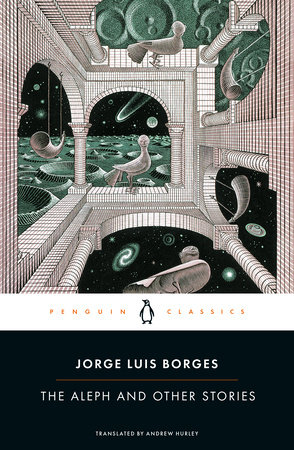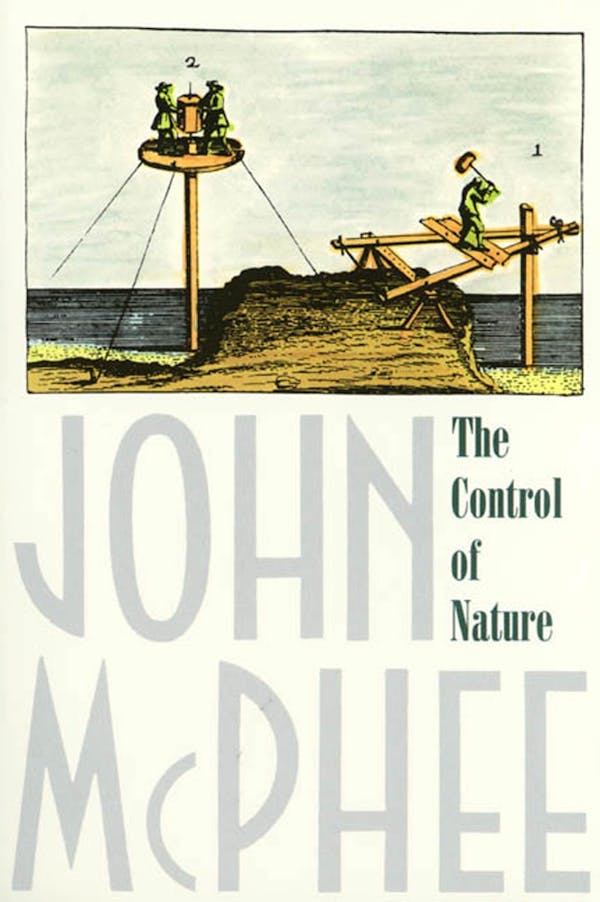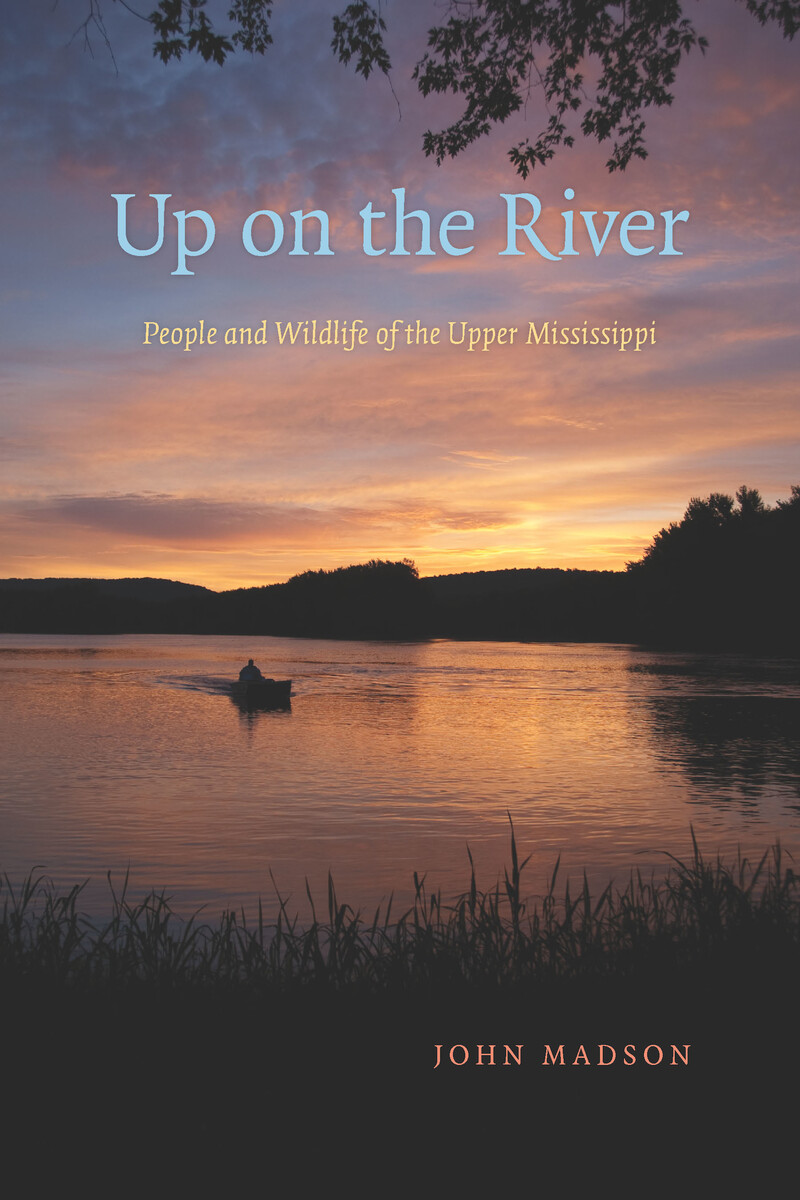The Map We’ve Made of the Mississippi
Bridge at St. Louis over the Mississippi, by Robert Benecke, 1875. [The J. Paul Getty Museum]
My new book, The Great River: The Making and Unmaking of the Mississippi, has its roots in a camping trip: while writing a magazine profile about a river guide in 2015, I found myself sleeping on an island in the middle of the country’s most powerful river. The Mississippi is famously engineered, but remains a wild place in many ways. I wanted to understand how such a strange paradoxical place came to be — which meant a deep dive into various strands of history. Here are a few books that have shaped my thinking on the river that I have come to love, presented in roughly the chronology in which I read them.
Jorge Luis Borges, The Aleph and Other Stories

Christopher Morris, The Big Muddy
I’m originally from Connecticut, and when I moved to Mississippi in my mid-twenties for a job, I knew almost nothing about the state’s history. I’ve always been interested in the natural world, so early on I picked up Christopher Morris’ 2012 book to keep on my shelf as a reference. His comprehensive and very readable history focuses on what geologists call the Lower Mississippi River — the big river flowing through the South. Morris’ work was my entry point into a wide range of scholarship.
John Barry, Rising Tide
 It almost seems unnecessary to mention this 1998 book, which, at least in the circles I run in, is known as the book of Mississippi River history. Focused on a massive flood in 1927 that reshaped the river and the country, Rising Tide is as gripping as a novel and is filled with rich details. (I’ll always remember how John Barry describes engineer James Buchanan Eads walking “the river bottom, alone in the silent and turbulent darkness” as he salvaged sunken cargo.) Barry is now at work on a more comprehensive history of the river, and it’s sure to be a masterwork.
It almost seems unnecessary to mention this 1998 book, which, at least in the circles I run in, is known as the book of Mississippi River history. Focused on a massive flood in 1927 that reshaped the river and the country, Rising Tide is as gripping as a novel and is filled with rich details. (I’ll always remember how John Barry describes engineer James Buchanan Eads walking “the river bottom, alone in the silent and turbulent darkness” as he salvaged sunken cargo.) Barry is now at work on a more comprehensive history of the river, and it’s sure to be a masterwork.
Oliver Houck, Down on the Batture
The Mississippi River is contained by levees, but in most places, those levees are built many meters — and in many cases, several miles — from the water. That leaves leftover land between the river and the levee, sometimes scrubby, sometimes wild, but typically overlooked by society at large, a place “where the water beats against the land,” as the environmental lawyer Oliver Houck puts it, and “where the river breathes.” Given the region’s French heritage, its not surprising word for this space is also derived from French: “batture,” from battre, the word for “to beat” or “to batter.” Houck spent years wandering the batture around New Orleans and these short essays, published in 2010, offer an invitation into that space.
John McPhee, The Control of Nature
 In many ways, I learned to write nonfiction from John McPhee. The fact that he has written about the Mississippi River, then, was both inspiring and intimidating. I remember reading “Atchafalaya,” one of three long essays in his 1989 book The Control of Nature, while sitting in a park in New Orleans, not long after I decided to write The Great River. The essay is about our fraught — and maybe doomed — effort to stop the Mississippi from rerouting itself in southern Louisiana. Reading it, I felt a sense of vertigo, a visceral understanding of how fragile the place was.
In many ways, I learned to write nonfiction from John McPhee. The fact that he has written about the Mississippi River, then, was both inspiring and intimidating. I remember reading “Atchafalaya,” one of three long essays in his 1989 book The Control of Nature, while sitting in a park in New Orleans, not long after I decided to write The Great River. The essay is about our fraught — and maybe doomed — effort to stop the Mississippi from rerouting itself in southern Louisiana. Reading it, I felt a sense of vertigo, a visceral understanding of how fragile the place was.
Walter Johnson, River of Dark Dreams
In 2017, I canoed from St. Louis to the Gulf of Mexico with a motley cast of companions. They’d often joke about how, when we landed in camp each night, I’d pull some battered book out of my dry bag. River of Dark Dreams was, thanks to much page-creasing and underlining, perhaps the most battered. It’s a 2013 history of the Cotton Kingdom, but, as one of the blurbers puts it, it’s written “from the bottom up,” focusing on ecosystems and enslaved laborers, rather than just the famous men in charge of plantations. It makes an important era in the river’s history come alive.

Thomas Ruys Smith, Deep Water
Thomas Ruys Smith’s first book, River of Dreams, served as a key guide as I tried to untangle the history of the river before Mark Twain, whose fame tends to overshadow everything that preceded him. This second book, published in 2019, homes in on the moment when Twain was writing — expanding on a key period of transition, for both the river and American culture. As a paddler myself, I was particularly taken by Smith’s exploration of the early history of Mississippi River paddling travelogues.
Gayle J. Fritz, Feeding Cahokia
 When I first moved to Mississippi, I lived near what everyone called an “Indian mound” — a low hump of soil that didn’t interest me at all. I knew, though, that I would have to better understand these mounds to write my book. Gayle J. Fritz’s work, which focuses on women in agriculture in early mound-building societies, helped change my mind completely. She helped me understand that for thousands of years, people worked collaboratively — with one another and with the natural world — to live along a chaotic river. America has, by contrast, tried to dominate the river. The earthworks are reminders that there’s a better way.
When I first moved to Mississippi, I lived near what everyone called an “Indian mound” — a low hump of soil that didn’t interest me at all. I knew, though, that I would have to better understand these mounds to write my book. Gayle J. Fritz’s work, which focuses on women in agriculture in early mound-building societies, helped change my mind completely. She helped me understand that for thousands of years, people worked collaboratively — with one another and with the natural world — to live along a chaotic river. America has, by contrast, tried to dominate the river. The earthworks are reminders that there’s a better way.
Phillip Carrol Morgan, Anompolichi: The Wordmaster
It’s important to me to read not just history, but also fiction and poetry that brings alive the settings in my work. William Faulkner’s short stories about hunting in the Mississippi Delta — collected in Big Woods — have been a key influence. But that work is already familiar to many readers. So I here want to highlight another novel that also deserves be known, by Choctaw/Chickasaw writer Phillip Carroll Morgan. He imagines what life might have been like in the era when the river’s largest earthwork, at Cahokia, was built.
John Madson, Up on the River
 I know best the big, southern Mississippi River. I knew The Great River would have to explore and consider the Upper Mississippi, too, despite it feeling like a wholly different territory. For more straightforward historical scholarship, I’d suggest John Anfinson’s The River We Have Wrought or Calvin Fremling’s Immortal River. But, on the recommendation of a colleague, I picked up John Madson’s 1985 book while I was road tripping along the river in Minnesota. Its tales of fishermen and other river rats brought the river more alive than anything else I read, and demonstrated convincingly that, as Madson puts it, time on the river offers “a more perceptive encounter with the confused and confusing heart of American than would a visit to Yankee Stadium or Disneyland.”
I know best the big, southern Mississippi River. I knew The Great River would have to explore and consider the Upper Mississippi, too, despite it feeling like a wholly different territory. For more straightforward historical scholarship, I’d suggest John Anfinson’s The River We Have Wrought or Calvin Fremling’s Immortal River. But, on the recommendation of a colleague, I picked up John Madson’s 1985 book while I was road tripping along the river in Minnesota. Its tales of fishermen and other river rats brought the river more alive than anything else I read, and demonstrated convincingly that, as Madson puts it, time on the river offers “a more perceptive encounter with the confused and confusing heart of American than would a visit to Yankee Stadium or Disneyland.”
James W. Swinnich, Living and Playing the Blues on Dockery Plantation-Farms
Blues music is inextricably linked with the Mississippi River, and with the form of oppressive farming conducted atop its floodplain. For years, I lived near Dockery Farms, a plantation that is one of several sites where supposedly the “blues was born.” I knew this history would factor into the book, but I unearthed far more legend than verifiable fact. Many circulating “facts” could not be traced back to a primary source. Eventually my friend, the blues scholar Scott Baretta, pointed me toward this book. It’s self-published but is written with far more scholarly rigor than some of the blues-focused books published by major presses.
Read the other reading lists in this series: Lauren Markham and Marjorie N. Feld.